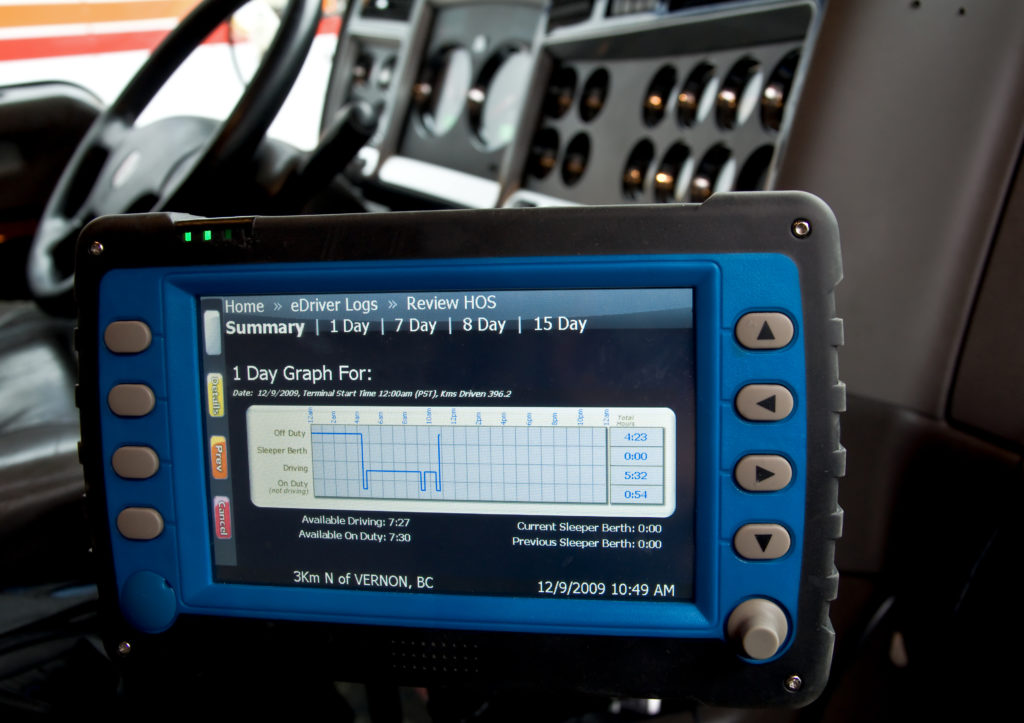
The federal electronic device mandate, which has officially been in effect for just over a year, required hours-of service data to be recorded with electronic logging devices instead of manual, paper logbooks. Recording drivers’ HOS data manually can lead to easier mistakes or falsifications.
The mandate has reduced overall hours-of-service violations and has helped motor carriers in multiple ways, but industry experts still say ELDs’ effect on roadway safety is still yet to be determined.
“I do feel the playing field is more equal now among all carriers as to everyone’s ability to properly handle loads,” said Cargo Transporters’ vice president of safety, Shawn Brown. “I think ELDs are making the roads safer. Drivers seem to be resting when they should, resulting in more refreshed drivers on the roads.”
Hours-of-service violations found by roadside inspection have decreased by over 50 percent since the original 2017 compliance date, according to Federal Motor Carrier Safety Administration spokesman, Duane DeBruyne. Nearly nine million roadside driver inspections have been conducted between December 2017 and October 2020, and less than 1.25% of those have shown drivers failing to use the mandated method for recording their hours-of-service.
The full effect of the ELD mandate was implemented in December of 2019, and the two-year exemption for older recording devices expired at that time.
Now, drivers can much more easily record proper and accurate records of duty statuses, said Omnitracs’ vice president of regulatory affairs, Michael Ahart.
“When using paper logs, it was much easier for drivers to make mistakes, but ELDs have reduced this risk and allowed drivers to better operate within the boundaries of the HOS regulations,” he explained.
Still, overall false log violations have been increasing, which Kerri Wirachowsky, director of the Commercial Vehicle Safety Alliance’s roadside inspection program, believes is due to the misuse of personal conveyance or overall confusion regarding recent HOS regulation changes.
“The number one question I get from [the] industry is asking for clarification of personal conveyance,” she said. “In a lot of instances, they are misunderstanding what they can do with personal conveyance. I believe that has caused false [log numbers] to go up.”
When ELDs are used properly, though, their usage can help drivers avoid nearly 2,000 crashes each year, as well as save 26 lives and avoid 562 injuries annually, as estimated by FMCSA.
“While these are FMCSA estimates, our nearly two decades of experience support the idea that ELDs have a tangible, positive impact on the safety of our nation’s roadways,” said ELD provider Trimble Transportation’s vice president of product management, Glenn Williams.
Opponents of ELD implementation, however, believe that ELDs have not positively impacted roadway safety. J.J. Keller & Associates’ transport industry business adviser, Rick Malchow, noted that overall road injuries rose from 106,000 in 2010 to 176,000 in 2018.
“I don’t think that shares the entire story, because you don’t know the causality of those accidents,” he stated.
However, it may be far too early to determine ELD’s real effects on crash numbers, said Fred Fakkema, Zonar’s vice president of safety and compliance. Throughout the stay-at-home orders of the pandemic, traffic decreased significantly and many people began to speed, causing the number of overall roadway collisions to spike, he explained.
“The COVID aspect of it throws a wrench in the traffic collision and management aspect of it because there is less congestion than we’re used to, and we’ve seen an increase in speed in commercial vehicles and cars,” he continued.
Violations, though, have continued to decline, said Malchow.
“One of the largest decreases came from a reduction in form and manner violations. ELDs are pretty much logging it as you do it,” he said.
Many industry experts foresee safety metrics continuing to get better, as overall violations at roadside inspections have steadily declined. Driver violations dropped from 1,023,654 in 2018 to 784,188 in 2020.
“ELDs are making sure that companies are accountable and their drivers are operating legally,” said Garner Trucking’s chief operating officer, Tim Chrulski. “I think that is a giant success on its own, regardless of what the statistics show.”




